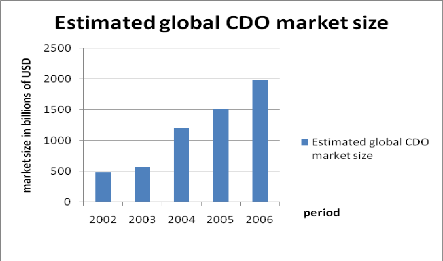2.8.1 Financial Regulations Methods and
Implementations
Basel II financial regulation method is the most commonly used
type of financial regulations. Basel II is the second of the Basel Accords
which are a set of recommendations on banking and regulators issued by the
Basel Committee on Banking Supervision. The purpose of Basel II is to
create an international standard that banking regulators can use when creating
regulations on how much capital banks need to put aside to guard against the
different types of financial and operational risks. Supporters of Basel II
believe that such an international standard can help to protect the
international financial system from the types of problems that might arise if a
major bank or series of banks should collapse. Bear in mind that this Basel II
accord made sure the issues of risk measurement as well as risk management
within financial institutions were tackled.
One of the most difficult aspects of implementing an
international agreement such as Basel II
is the need to accommodate
different cultures, different structural models and the already
existing
regulations. Bear in mind that regulators can't leave capital decisions totally
to the
banks because if they do so they will not be doing their jobs
and the public's interest will not be served as well. The Basel II framework is
intended to promote a more forward-looking approach to capital supervision,
that is, one that encourages banks to identify the risks they may face today
and in the future and to develop their abilities in managing those risks. As
such, Basel II is intended to be more flexible and better able to evolve with
advances in markets and risk management practices.
Following Moody's statistics, it was evident that the CDO
market in the Europe, Middle East and Africa (EMEA) grew up to 78% in 2006.
This growth was driven by banks in a bid in adjusting to the Basel II
regulation. This Basel II regulation forced many banks in 2006 to reexamine
their risk exposure so as to limit the amount of capital they will be holding
against investments, Crompton, 2007. Crompton looked at securitization and CDOs
as means of banks moving some of the risks of their balance sheets into
investors hands. All of these centre on Basel II because it has focused its
attention on economic capital as well as driving the project market into
securitization. This is because securitization is assumed to offer easier
access to mortgage assets for investors thereby making things difficult for
direct holders of home mortgage loans to procure because of the uncertainty
existing in the credit quality of the loans and the problems associated with
servicing them.
2.8.1.1 The Growth of CDOs
Table 1: Estimated Size of the Global CDO Market by the
end of 2006.
|
Period
|
Estimated amount in billions of USD
|
|
2002
|
480.0
|
|
2003
|
570.0
|
|
2004
|
1200.0
|
|
2005
|
1510.0
|
|
2006
|
1980.0
|
Figure 5: Estimated Global CDO Market Size

Source: Thomson Financial
From the graph above, it is clear that between 2002 and 2006,
the CDO market size experienced a steady growth increase. The issuance of the
CDOs market experienced a significant increase of about 78% in the year 2006.
During this period, most of the CDOs tranches obtained the highest level of
credit rating which is the triple A (AAA) rating considered to be the safest by
the credit rating agencies. The growth in the CDOs market is as a result of
innovation such as the creation and implementation of the Basel II regulation.
Thanks to this innovation, the CDO market became one of the most profitable
markets for investment banking. The CDO market is now moving towards the
direction of on demand credit risk whereby an investor can specify a product's
risk/return ratio and the bank merely originates and then distorts this
risk/return ratio of the portfolio and delivers a new product to its client.
The above mentioned points greatly contributed to the growth of the CDO markets
between the years 2002 and 2006 and thereby creating some value to its
investors, customers as well as the shareholders hence influencing the
investment decision-making process.
| 

